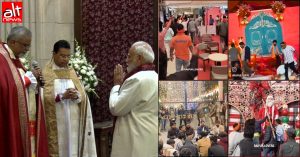An image of a purported historic document with the text “RSS did not participate in any anti-British movement from 1925 to 1947” bearing the emblem of the British Home Department and signed by Lord Mountbatten, the last British Viceroy and the first Governor-General of India, is viral on social media. Those sharing the image claim that it serves as proof that the Hindutva group, the Rashtriya Swayamsevak Sangh (RSS), did not contribute to India’s freedom movement.
The historic letter emerges weeks after Prime Minister Narendra Modi’s Independence Day speech on August 15, where he praised the RSS for completing 100 years of “service to the nation”. The RSS is the Bharatiya Janata Party’s (BJP) parent organisation.
On August 25, Congress leader Manish Tiwari (@livemanish_), who is also the social media coordinator of the Indian Youth Congress and Jharkhand state-in-charge, posted the image on X with the hashtag #RSS100YearsExposed. “No other proof required. Here’s the proof of RSS’s lack of any contribution to India’s Freedom Struggle,” he wrote. At the time of writing this, the post had over 280,000 views. (Archive)
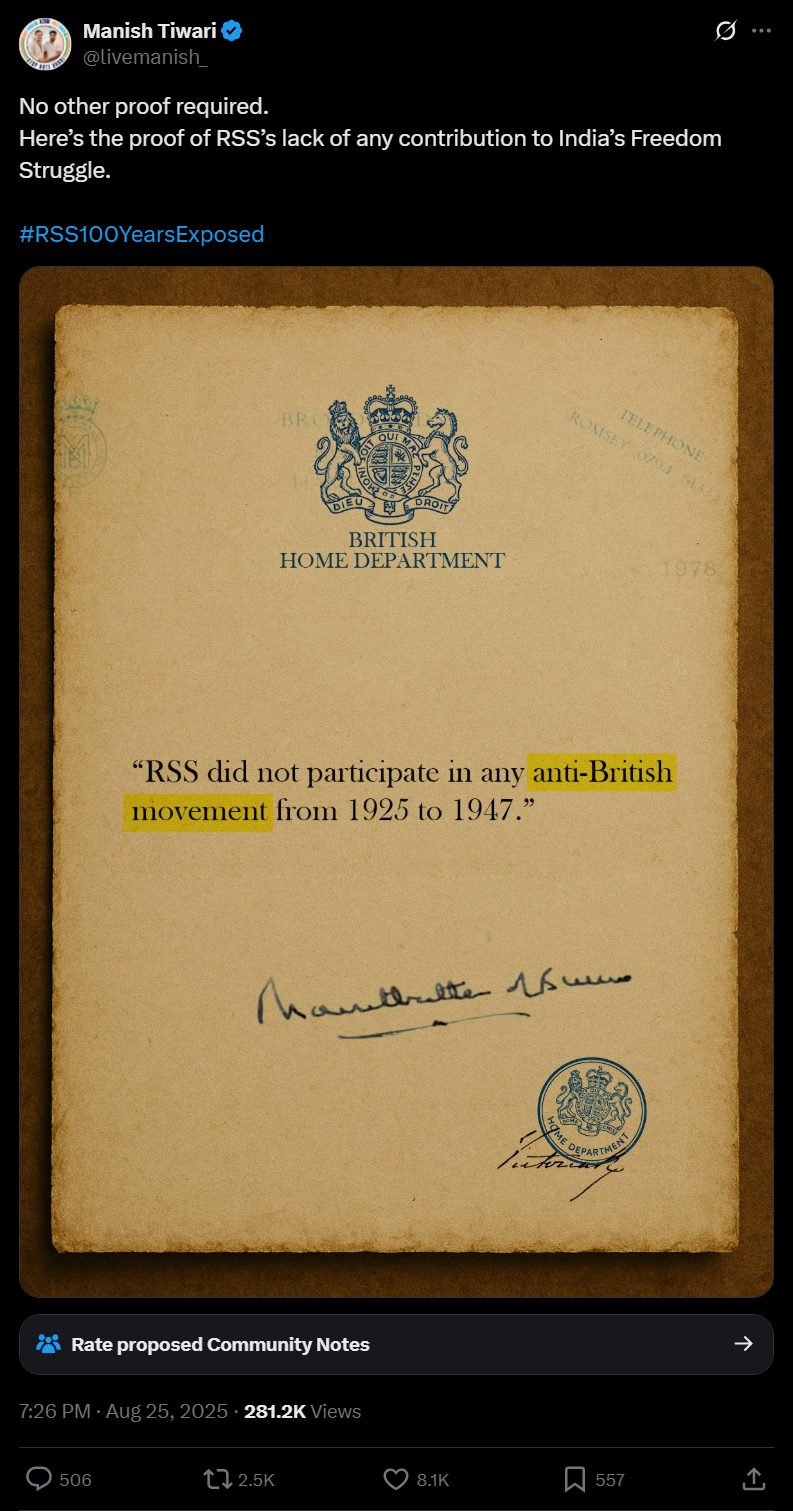
Congress leader and Rajya Sabha member Jairam Ramesh was also among those who amplified this claim. Ramesh reposted author Dayashankar Mishra’s post.

Another X user, Pragnya Gupta (@GuptaPragnya), also posted the same image with a similar caption. This post received more than 394,000 views and was reposted 2,500 times. (Archive)

Several other users posted the same image with similar captions. Below are a few instances.
Fact Check
From the beginning, we were doubtful of the document’s authenticity because it was undated, presented without any context, nor addressed to anyone in particular. It simply said that RSS did not participate in anti-British movements and this, too, was in quotes. It made little sense why the British Home Department would issue such a notification. Also, while it was signed by Lord Mountbatten, it did not mention his full name anywhere, which is usually the norm in official communications.
However, to be sure, we also ran a relevant keyword search to look for any documented evidence of the note, but found no relevant results. On examining the viral image closely for more clues, we noticed several inconsistencies.
- The affiliation below the emblem reads ‘British Home Department’; however, the official name is ‘Home Office’, which, according to the UK government’s official page, “plays a fundamental role in the security and economic prosperity of the UK.” There are 28 agencies and public bodies working under the Home Office. It was established in 1782.
- We also compared the emblem seen in the viral image to the one present on the UK government’s website. While the emblem was updated in 2024, after King Charles acceded to the throne, the constituent elements remain unchanged. This emblem is referred to as the Lesser Arms (a simplified version of the Royal Arms) and is present on government websites, passports and official documents to indicate that the government is acting in the name of the Crown.As the comparison below shows, there are several discrepancies. For one, the unicorn in the official emblem (left) has been turned into a horse (in the viral image). Going by the UK government’s explanation, the lion in the Arms represents England, while the unicorn represents Scotland. Secondly, at the center of the Arms is the shield, surrounded by the Order of the Garter whose motto “Honi soit qui mal y pense” is written on it. This translates to “shame on him who thinks evil of it”. This text is garbled in the viral image (right). Lastly, below the shield is the King’s motto, “Dieu et Mon Droit”, which translates to “God and my right”. Only the words ‘Dieu’ and ‘Droit’ appear in the viral image (right).
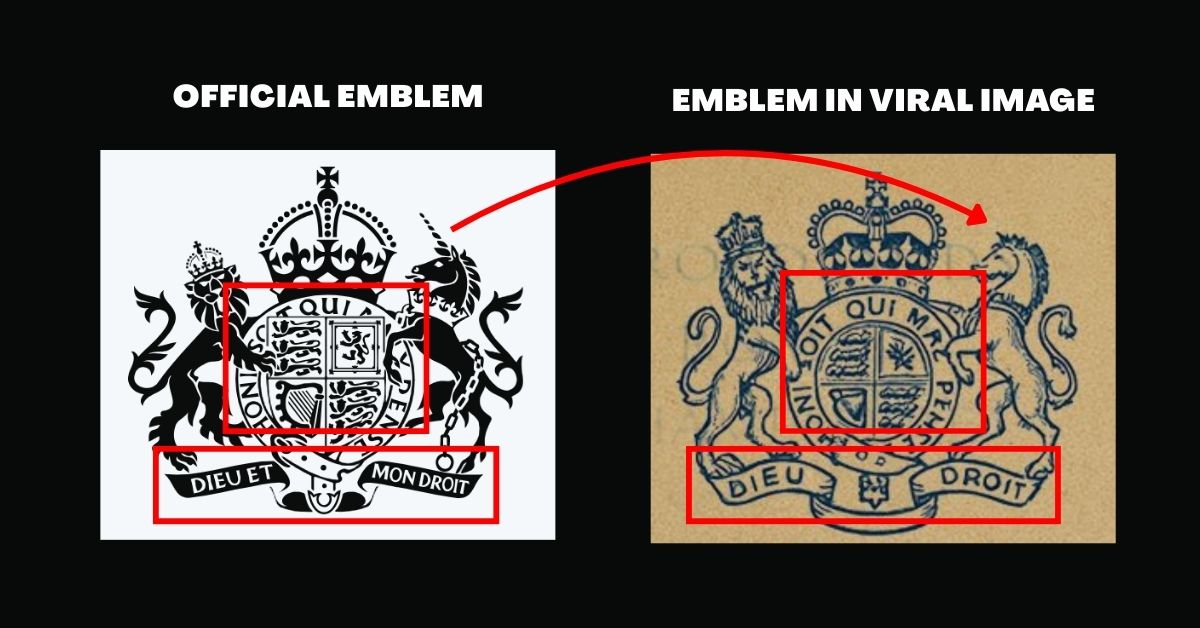
3. We also noticed that the two emblems in the viral image — one on top and the other on the bottom-right corner — were different. The one at the bottom also had garbled text.

4. We then tried to run a reverse image search of Mountbatten’s signature to locate any archival documents with his signature. This led us to a website called autographcollection.co.uk, which had a typed letter signed by Lord Mountbatten from 1978.
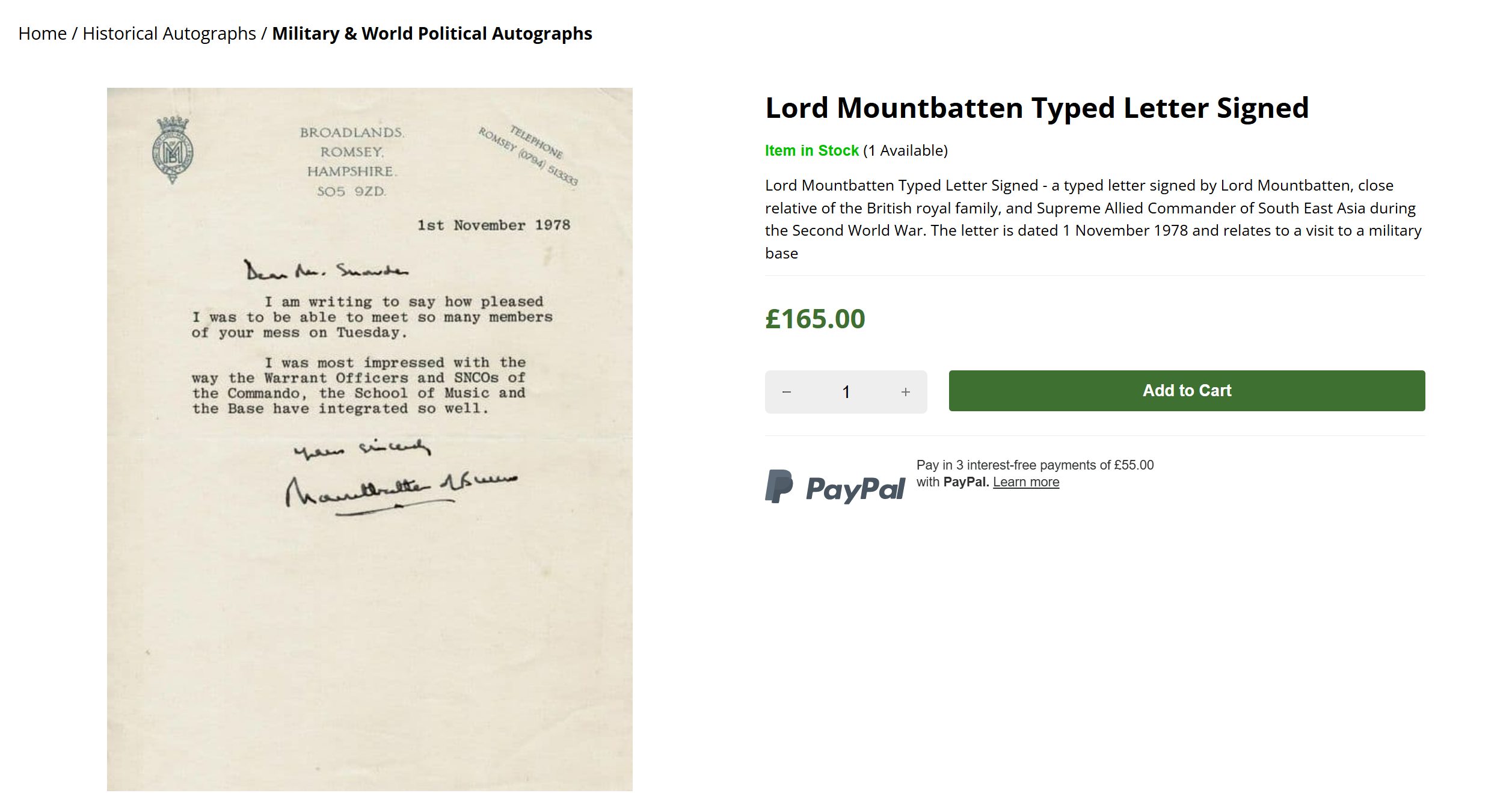
On comparing this letter with the viral image, it became apparent that the contents of this particular letter were manipulated to create the viral image. Some markings in the original letter appear as blurred-out text in the viral image. Comparisons below:
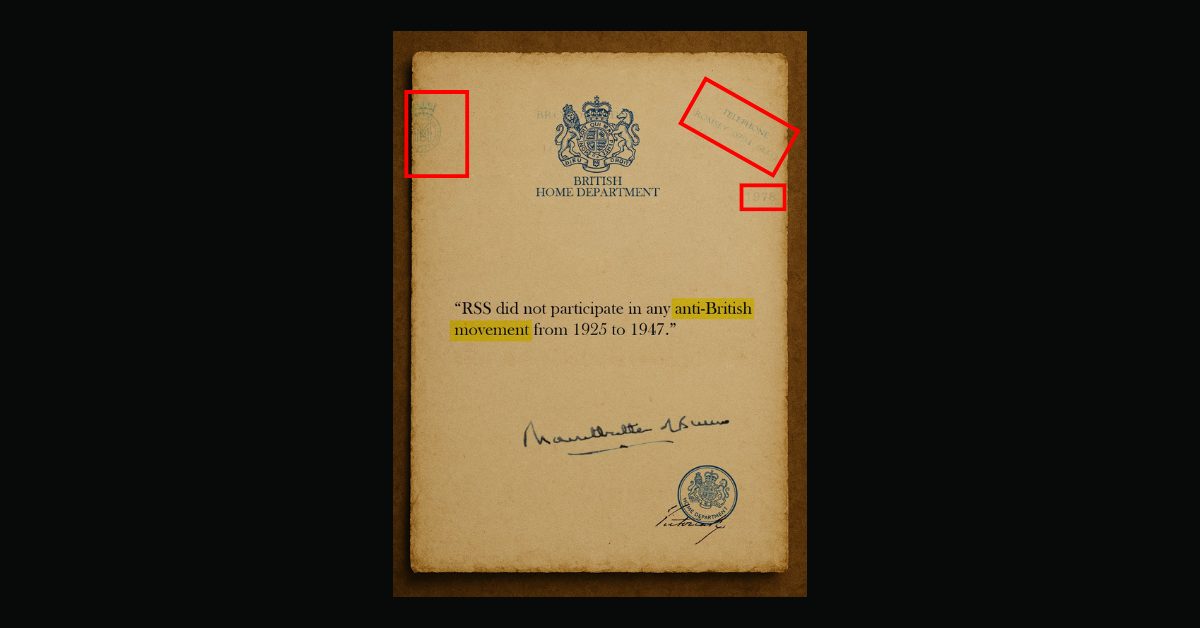
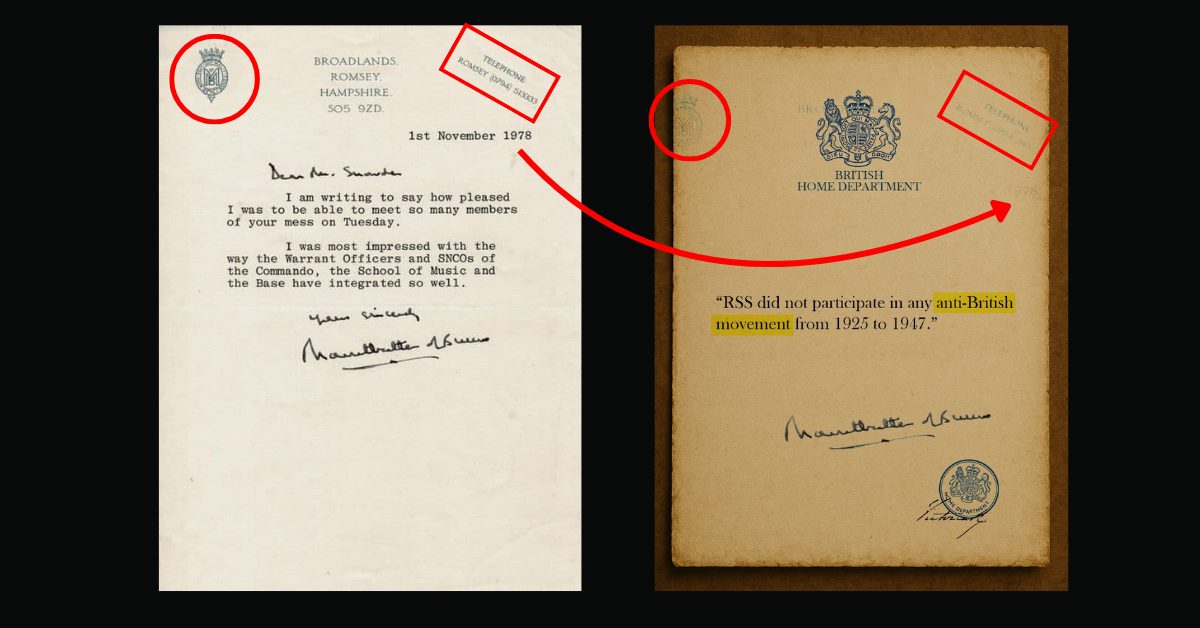
The signatures of Mountbatten, as seen in the viral image and in the letter, are identical too; even the dot made by the ink under his signature is in the same position.
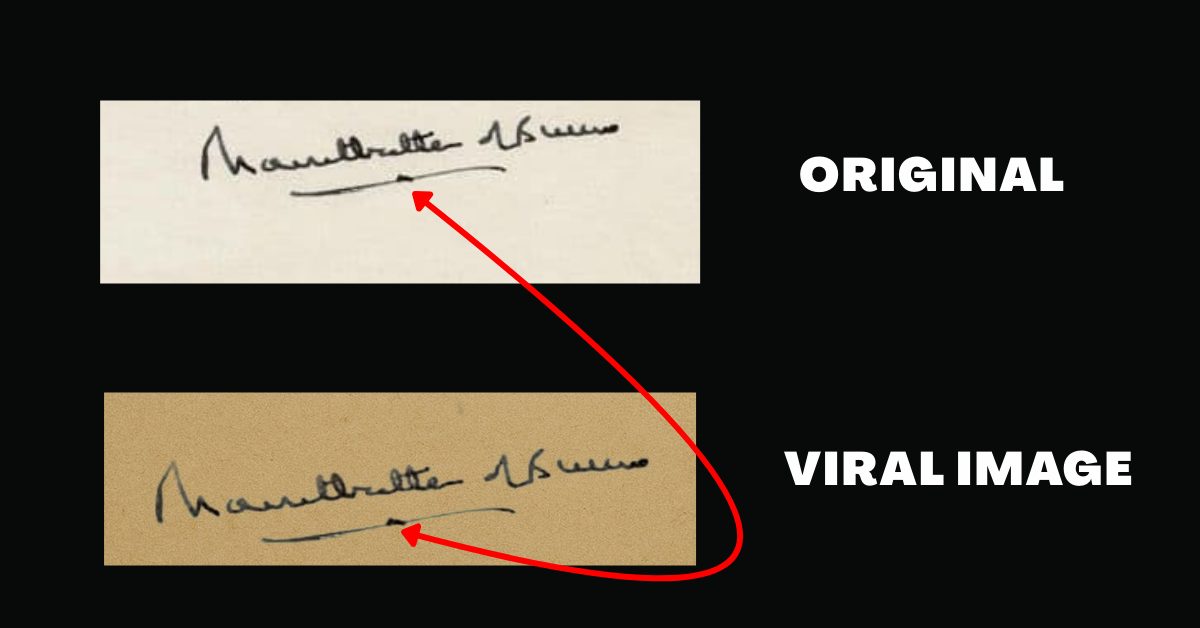
Also, on looking closely one can notice that the letter was signed as ‘Mountbatten of Burma’. This is a reference to the title Viscount Mountbetten of Burma that was bestowed upon him in 1946. The following year he was named Earl Mountbatten of Burma. The Burma in the title was a hat tip to his contribution as supreme allied commander of the South East Asia Command. Under his leadership, the British defeated the Japanese offensive towards India and reconquered Burma.
5. Lastly, Mountbatten did not serve in the Home Office. In March 1947, he was named the Viceroy of India and asked to oversee the withdrawal of the British from the country. He remained the interim Governor-General till June 1948. Apart from his stint in India, he remained largely part of the defence forces and served in the Royal Navy before being named chief of defence staff in 1959.
We also found that X user @GuptaPragnya, who was the first to share the image on August 25, added to the thread of the same post two days later (August 27) that she never claimed the image was original. She said that it was a creative based on archival sources that apparently indicate so about RSS, and listed several archival sources.
She also clarified that the letterhead in the graphic had been stylised, and the Home Department here referred to the Government of India and the Bombay (Presidency) Home Department.
Too much work for Bhakts but give it a try and read the sources from where the content of this creative was sourced.
It’s laughable how the reactions on this post think that this is an original image.
Who claimed that this was original. 😄😄 🤷♀️🤷♀️👇👇
Here are the archival…
— 🥇 Pragnya Gupta (@GuptaPragnya) August 27, 2025
From the above findings, it is clear that the viral image is morphed and inauthentic It was likely created using photo editing tools by using Mountbatten’s signature from another, unrelated letter signed by him in 1978.
Note: The story has been updated with more details. The comparison of the emblem has been changed to include the version used by the government (Lesser Arms). Previously, we had compared it with the elaborate Royal Arms used by the Royal family.
Independent journalism that speaks truth to power and is free of corporate and political control is possible only when people start contributing towards the same. Please consider donating towards this endeavour to fight fake news and misinformation.



